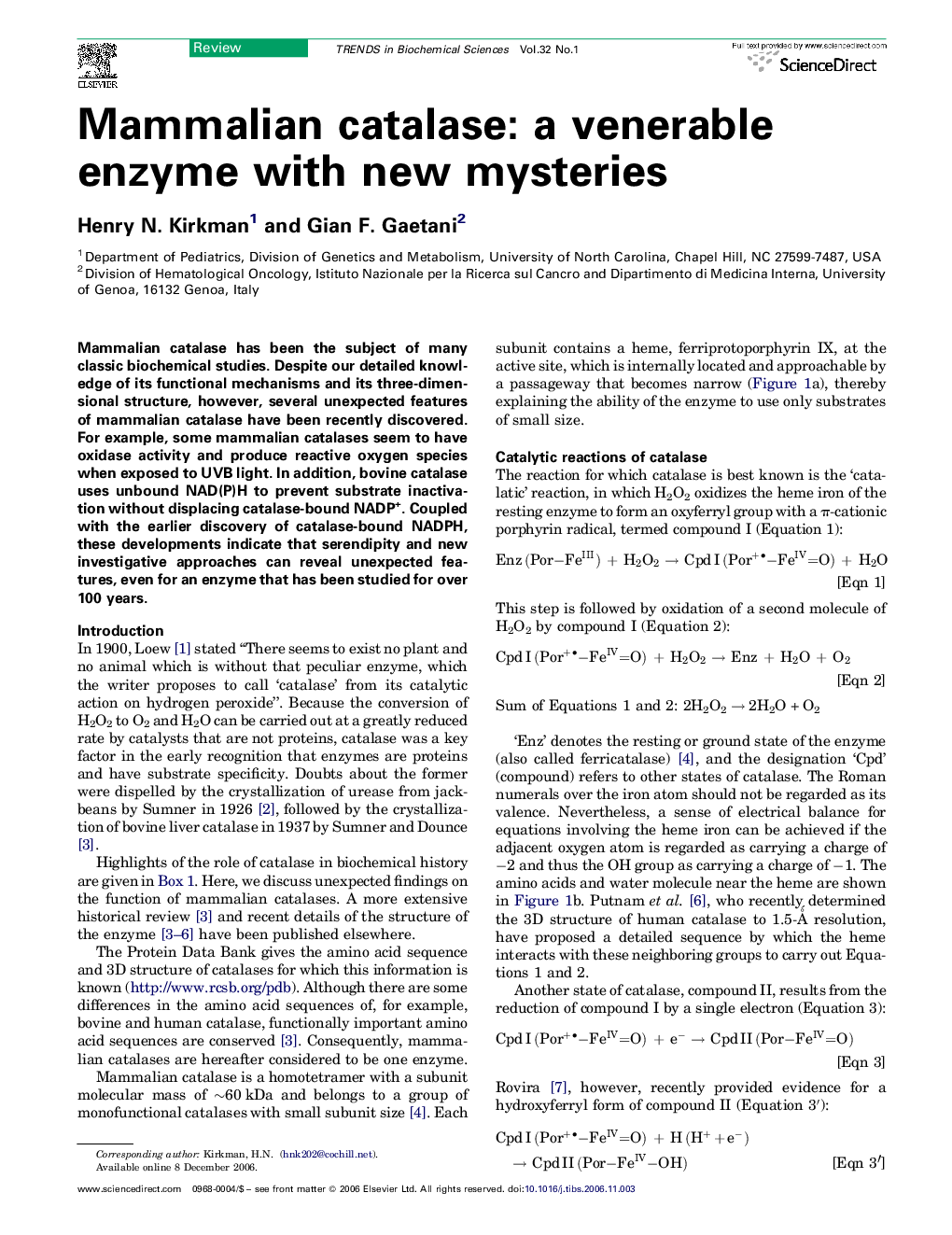| Article ID | Journal | Published Year | Pages | File Type |
|---|---|---|---|---|
| 2031797 | Trends in Biochemical Sciences | 2007 | 7 Pages |
Mammalian catalase has been the subject of many classic biochemical studies. Despite our detailed knowledge of its functional mechanisms and its three-dimensional structure, however, several unexpected features of mammalian catalase have been recently discovered. For example, some mammalian catalases seem to have oxidase activity and produce reactive oxygen species when exposed to UVB light. In addition, bovine catalase uses unbound NAD(P)H to prevent substrate inactivation without displacing catalase-bound NADP+. Coupled with the earlier discovery of catalase-bound NADPH, these developments indicate that serendipity and new investigative approaches can reveal unexpected features, even for an enzyme that has been studied for over 100 years.
